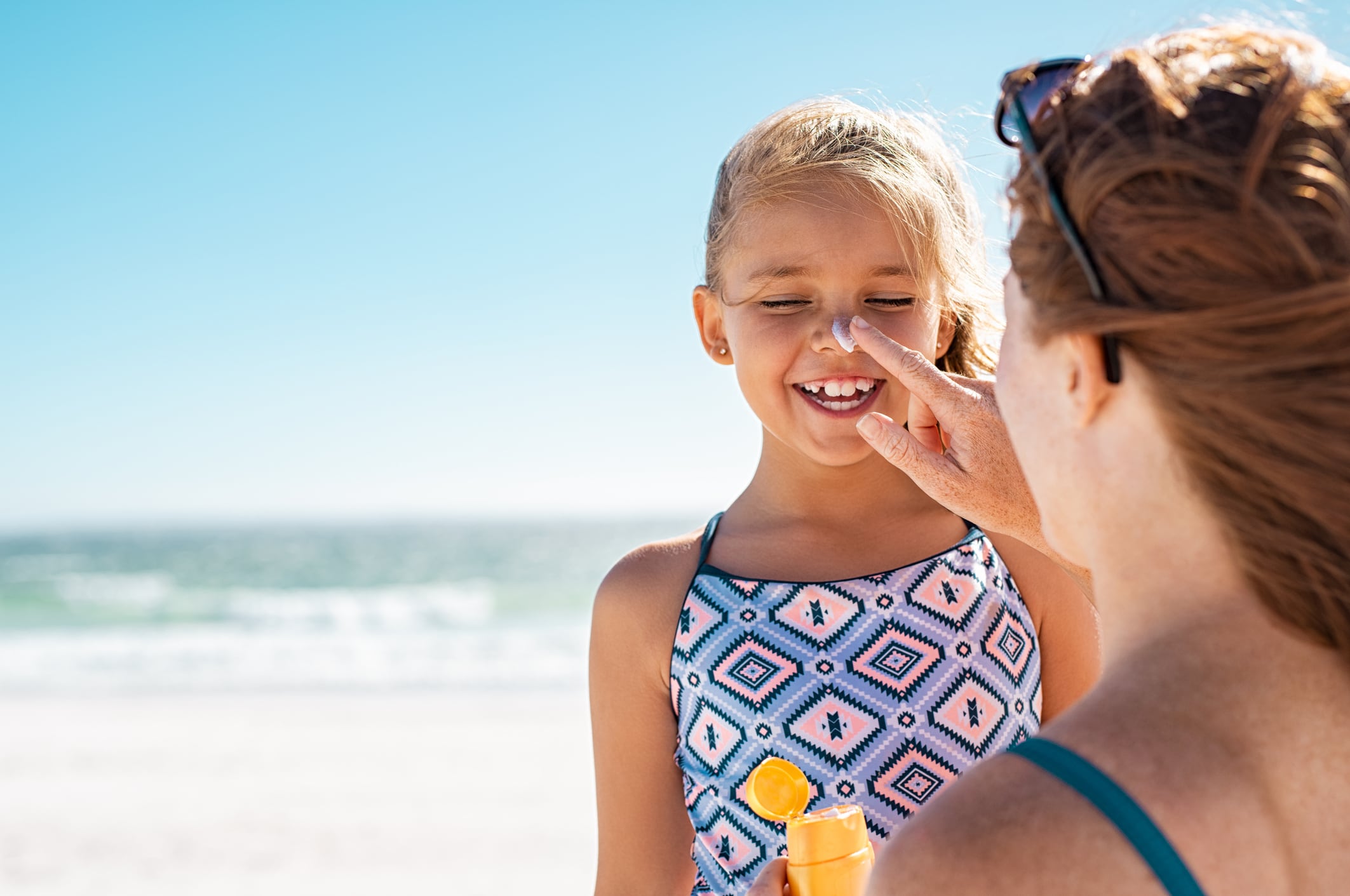Sun care clinical testing has always been complex, but innovations in the category and trends in recent years – such as the clean beauty movement and sustainability awareness – have made it even more complicated.
According to Anne Charpentier, the performance of sun care products can be evaluated using in-vitro, in-vivo or hybrid methods.
Criteria that influence the performance of sun care products include composition, repartition, photostability, absorbance, and distribution of inorganic and organic filters, as well as the format (eg spray, compact powder, oil, cream).
Other factors can have an impact while testing the performance of sun care, such as wrinkles, skin location, sweat, hair, application procedures and quantity.
With so many elements to consider, as well as differing regional regulations, sun care companies must ensure that all the various tests are working cohesively.
“Harmonising test methods between and within laboratories ensures the highest quality of sun care,” explained Charpentier. “Unifying global reference methods and labelling rules will also ensure that human health (eg nano and endocrine disruptors) and the environment are respected too.”
On the Skinobs Preclinical testing platform, industry experts can have free access to 16 specific in-vitro testing methods provided by 30 testing laboratories around the world. On the Clinical testing platform for in the-vivo UV SPF and UVA-PF, there are 28 testing methods available, which are connected with more than 76 testing laboratories.
Sun care requires complex testing processes
Nowadays, there are a multitude of sunscreen testing procedures, which include: Sun Protection Factor: (SPF), UVA Protection Factor (UVAPF), Critical Wavelength (CW),FDA, JCIA or Water Resistance (WR).
Fortunately, all these procedures are harmonised globally by the ISO (International Organization for Standardization).
To ensure the accuracy and reproducibility of in-vitro and in-vivo testing, Charpentier explained that it’s essential to implement systematic control testing such as BIPEA inter laboratory comparison tests and an audit of the global process, such as Suncert diagnostics and FEBEA audit.
It’s also important that these tests investigate real-life situations when it comes to claims like ‘anti-salt’, ‘anti-sweat’, and anti-sand’.
“The in-vitro SPF is strongly required by the industry and governmental organisations delivering results equivalent to the in-vivo SPF according to ISO 24444 method,” explained Charpentier.
“As evidence, the degree of protection should be measured using standardised, reproducible testing methods and take photo-degradation into account, as recommended by the European Commission” she added.
“Generation of standard erytemal dose on the back of at least 10 volunteers”
According to Charpentier, for many years, the Sun Protection Factor (SPF) has been evaluated on the skin of human volunteers in-vivo.
The current in vivo SPF test method used in Europe (ISO24444/2019) was created by a team of international experts in the International Standards process and is widely used to support labelled protection claims or in-market control.
Charpentier noted that there are currently ethical issues with this test because it can potentially cause skin damage on the subjects – as erythema (skin reddening) is currently used to assess UVB exposure.
“Up to now, the SPF value given on the bottle of each sun protection product must be determined by the generation of sunburn erythemal dose on the back of at least 10 volunteers,” she explained.
“This is not only invasive but also time-consuming, since volunteers must come back after 24 hours for evaluation of the minimal erythemal dose.”
However, she revealed that there are promising alternatives in the works that are likely to be available soon.
Developing alternatives to the ‘gold standard’
The European Commission has been a strong advocate for the development of alternatives to the current gold-standard in vivo SPF test method, but, as Charpentier pointed out, it’s essential that any alternative method can demonstrate a high statistical correlation with the current gold-standard method.
“Unfortunately, predicting in-vivo SPF test results using alternative methods can be for specific type of texture a difficult scientific endeavour,” she explained.
“Several alternative methods are in various stages of development, and five methods are currently undergoing statistical characterisation vs the ‘gold standard’ method in a multi-stakeholder technical consortium,” she continued.
Two of those methods have ring-study data evaluating their correlation with ISO24444/2019. Results of these methods have been published in peer-reviewed journals and both are formal work items in the final stages of standardisation in the ISO/TC217/WG7 ‘Sun Protection Test Methods’ Working group.
Charpentier explained that these two methods are expected to be the first alternative SPF methods to be published as full ISO standards, as early as 2025 “whereupon they will be preferred reference alternative methods, as stated in the European Commission Recommendation of 2006,” she explained.
Quantification and stability analysis of UV filters
According to Charpentier, UV filters can sometimes lead to a partial or complete loss of effectiveness or even to a possible transformation into a hazardous substance and undesirable by-products.
“Laboratories work to anticipate physical and chemical degradation of raw materials based on photodegradation and new criteria to ensure the safety of sun care products,” she explained.
“However, it has been demonstrated that some skin reactions due to photoallergic contact are caused by using many commonly organic sunscreens.”
Because of this, the maximum content of UV filter in cosmetics products has been limited by the European Commission.
She said that different techniques are also used to analyse the UV filters, such as NMR spectroscopy, Raman spectroscopy, gas chromatography/mass spectrometry, high-performance liquid chromatography/UV detector.
Other sun care claims
In recent years there have been various new trends and consumer needs that also require testing if a company wishes to make a claim of this sort. These include:
- Sand resistance
Charpentier said that consumers are increasingly challenging the photoprotection of cosmetics brands, particularly in terms of in situ conditions such as real conditions of use on the beach.
“There is currently no standardised in-vivo or in-vitro method for assessing Sand Resistance,” she explained.
“To address this issue, a new in-vitro method has been developed by HelioScreen to allow the evaluation of the Sand Resistance percentage of a sunscreen product by comparing the in vitro SPF before and after a specific agitation in a standardised sand.”
- Blue-Light for coloured or non-coloured sunscreen
Blue light and anti-pollution claims have also grown massively in the past five years.
“The criteria for Blue Light protection claims should be adjusted for uncoloured products,” explained Charpentier.
“The HelioScreen approach suggests that for uncoloured sunscreen products, the minimum requirements should be %BL ≥ 30% and BL-CW ≥ 385 nm to make a valid Blue Light protection claim.”
- Oxidative stress assays
Solar radiation penetrates skin, and the energy is absorbed by constitutive molecules, causing damage like oxidation and inflammation.
“Evolution brought effective defences such as pigmentation to quench radiations, anti-oxidation, and clearance processes,” said Charpentier.
“However, excess sun exposure disrupts those self-defences, leading to uncontrolled reactive oxygen species (ROS) production, DNA damage, proinflammatory response and microbial dysbiosis.”
“Many of these mechanisms can be evaluated with controlled radiations on 3D skin models studying various biological markers and cell signalling pathways,” she continued.
Evaluating ‘clean’ sun care
Because some chemical compounds have been considered dangerous to coral reefs and other marine life, Hawaii banned the sale of sunscreen products containing oxybenzone and octinoxate in January 2021.
In March 2022, the Australian Journal of Chemistry published an article by Nial J. Wheate that said numerous studies confirmed it is known that chemicals sunscreens can have potential hormonal activity and non-hormonal effects, including acting as teratogens, altering gene regulation, inducing changes in antioxidant and free radical production, and inducing coral bleaching.
However, this article also said that when damage does occur to reefs and animal life, there are often other causes that are more likely to be the culprits, including changes in water temperature, water turbidity, elevated nutrient levels, and the presence of pesticides and medicines used for human and animal health.
Zebrafish have featured in most of the ecotoxicology studies and are well-recognised as a standardised model for this type of study as they “share some genetic, physiological, and anatomical similarities with mammals are routinely used to study the effect of chemicals on vertebrate embryonic development,” explained Charpentier.
“To evaluate the endocrine activity, translucent embryos are used as an in-vitro test to measure thyroid activity of an ingredient or a formula.”
She continued: “For Marin Ecotoxicity there is an ISO norm (16712) that enables the study of the acute toxicity on Amphipods, Corophium Arenarium, determining the acute toxicity of marine or estuarine sediments to amphipods.”
“Marine or estuarine amphipods which typically live below the sediment surface are exposed to contaminated sediment. The endpoint for this test is the mortality percent. The salinity and temperature vary on the species of amphipod used.”
The future of sun care testing
And finally, what does Charpentier expect to see next in terms of sun care testing innovations? “There is a move towards using beauty devices and technology to help protect skin from the sun,” she shared.
She referenced the La Roche Posay concept skin patch, which was designed to measure UV rays and advise the consumer on what level of sun protection is needed. Charpentier also said she is aware that there are more devices in development, such as watches, also able to measure sun’s rays to determine the sun protection level needed.





